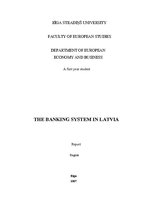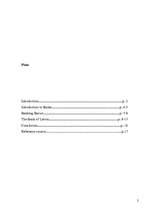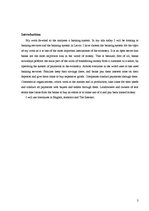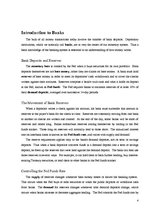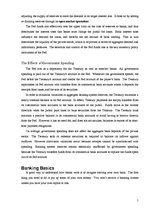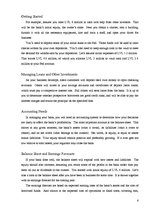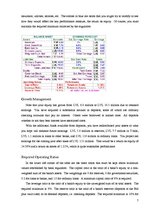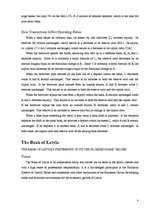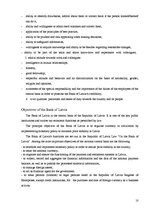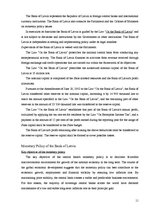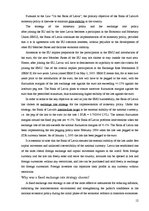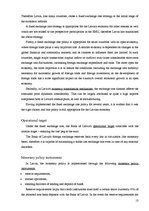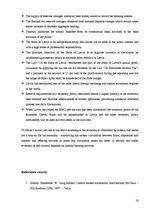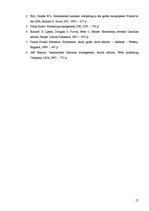-
The Banking System in Latvia
| Nr. | Chapter | Page. |
| Introduction | 3 | |
| Introduction to Banka | 4-5 | |
| Banking Basics | 5-8 | |
| The Bank of Latvia | 8-15 | |
| Conclusion | 16 | |
| Reference source | 17 |
My work devoted to the analyses a banking system. In my talk today I will be looking at banking services and the banking system in Latvia. I have chosen the banking system for the topic of my work as it is one of the most important instruments of the economy. It is an open secret that banks are the most important link in the world of money. This is because, first of all, banks nowadays perform the main part of the work of transferring money from a customer to a seller, by operating the system of payments in the economy. Almost everyone in the world uses or has used banking services. Families keep their savings there, and banks pay them interest rates on their deposits and give them loans to buy expensive goods. Companies conduct payments through them. Commercial organizations, which work at the market and in production, take loans for their needs and conduct all payments with buyers and sellers through them. Landowners and owners of real estate take loans from the banks to buy an estate or to make use of it and pay back loaned money.
I will use literatures in English, statistics and The Internet.…
The bulk of all money transactions today involve the transfer of bank deposits. Depository institutions, which we normally call banks, are at very the center of our monetary system. Thus a basic knowledge of the banking system is essential to an understanding of how money works. Bank Deposits and Reserves The monetary base is created by the Fed when it buys securities for its own portfolio. Bank deposits themselves are not base money, rather they are claims on base money. A bank must hold reserves of base money in order to meet its depositors' cash withdrawals and to cover the checks written against their accounts. Reserves comprise a bank's vault cash and what it holds on deposit at the Fed, known as Fed funds. The Fed requires banks to maintain reserves of at least 10% of their demand deposits, averaged over successive 14-day periods. The Movement of Bank Reserves When a depositor writes a check against his account, his bank must surrender that amount in reserves to the payee’s bank for the check to clear. Reserves are constantly moving from one bank to another as checks are written and cleared. At the end of the day, some banks will be short of reserves and others long. Banks redistribute reserves among themselves by trading in the Fed funds market. Those long on reserves will normally lend to those short. The annualized interest rate on interbank loans is known as the Fed funds rate, and varies with supply and demand. The reserve requirement applies only to the bank's demand deposits, not its term or savings deposits. Thus when a bank depositor converts funds in a demand deposit into a term or savings deposit, he frees up the reserves that were held against the demand deposit.

